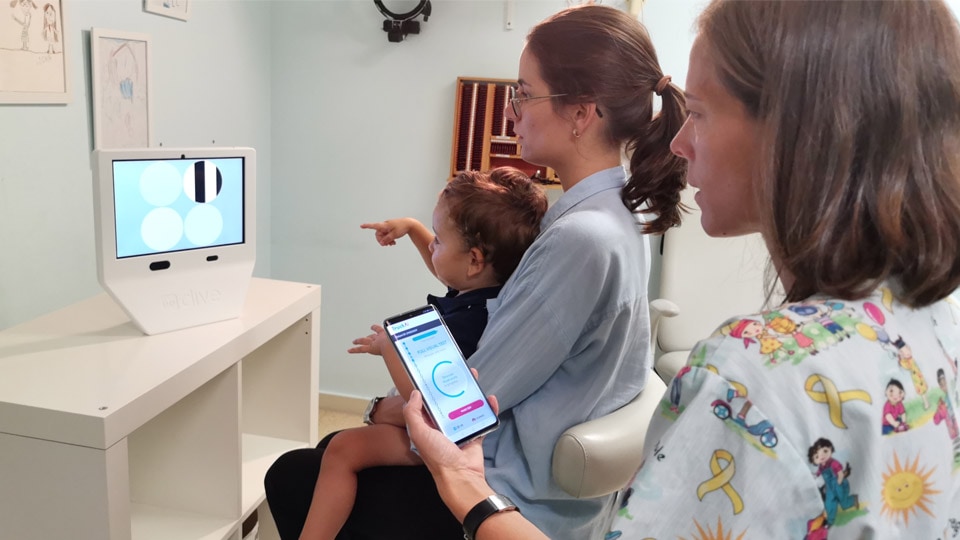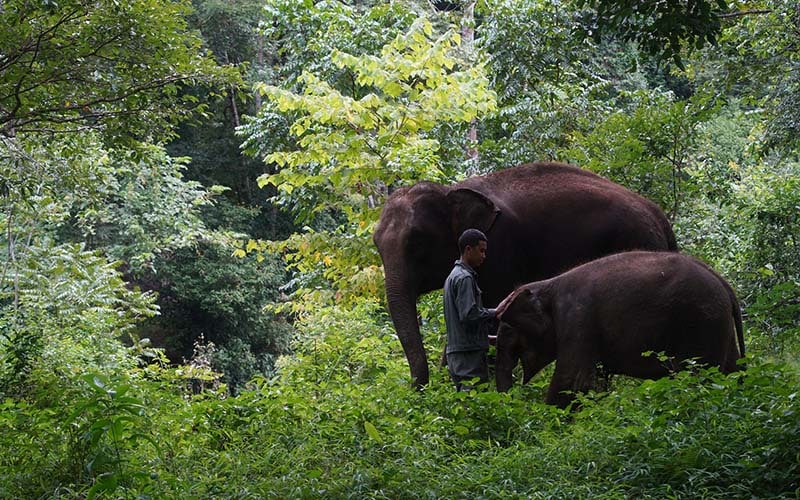Use Cases
TrackAI: Stopping blindness in its tracks
Up to 90 percent of visual impairments in children are preventable or curable if caught early enough. AI is now making that possible.

Every day, 11,000 babies are born with a visual impairment and, according to World Health Organization estimates, around 800 million children in the world have a visual impairment. Early diagnosis is essential for these children. With timely intervention, up to 90 percent of all cases are preventable or curable. However, diagnosing children can be difficult because they can’t articulate what’s wrong with them. Now, AI is making early diagnosis a very real possibility.
Most eye diseases occur in the first five years of life. Unfortunately, a lack of parental knowledge and awareness leads to many children missing the optimum diagnosis p eriod. Only a third of children with an eye disease receive early treatment. Most children remain undiagnosed for months or years, which affects their eyesight, educational opportunities, and development. In low- and middle-income countries, going blind can be a deadly threat for some children.
Traditionally it has largely fallen to professional ophthalmologists to detect eye diseases in children. To diagnose their condition the doctor will attract the child’s attention by moving their finger or an instrument and then observe the child’s reaction.
However, in many developing nations, professional ophthalmologists are in extremely short supply. In developed countries, rigorous referral systems mean that ordinary ophthalmologists are not qualified to give specialist tests for eye diseases. And once a patient is transferred to a specialist, the waiting time can be as long as three months to half a year.
TrackAI: Creating value with smart devices and AI

To tackle the lack of eye doctors and difficulty of diagnosing eye diseases in children, the Spanish medical research institute, IIS Aragon, and the startup DIVE Medical have been developing a new type of medical device named DIVE (Device for an Integral Visual Examination). The partners have designed it to provide automatic, high-speed, and accurate visual function testing for children and infants as young as 6 months old.
At the start of 2019, Huawei teamed up with IIS Aragon and DIVE Medical to jointly launch the TrackAI project. It will make use of Huawei smart devices and AI to save more children from eye diseases. TrackAI’s complete detection system consists of the DIVE device, a Huawei P30 mobile phone, and a Huawei MateBook E tablet.
Under the project, a unique collaboration between Huawei and the DIVE Medical start-up has been developed. DIVE (Device for an Integral Visual Examination) presents different stimuli on a high-resolution screen and captures the gaze of the patient using an eye tracker.
Huawei's HiAI platform was used in combination with DIVE to create an artificial intelligence model, capable of automatically analysing the collected gaze data and estimating the probability of a patient having abnormal visual development. A Huawei smartphone is used alongside the DIVE device to control the execution of the visual exploration and the quality of the collected data, and to visualize the screening results in real time.
As is also the case for most conventional techniques, TrackAI’s test results still need to be verified by an ophthalmologist, because the system relies on expert interpretation of the test results. Using AI to judge the results makes it easier for non-specialist pediatric ophthalmologists to interpret visual assessments and identify which children have visual impairments.
The co-founder of DIVE Medical, Victoria Pueyo said, “As researchers, we need the support of technology companies. Huawei is helping us to globalize DIVE’s impact and bring technology to every corner of the world.”
Medical institutes in five countries, including Spain and Mexico, are collecting data to train the AI model. So far, sight data from 4,500 children with a visual impairment has been collected so far. By continually collecting data and adjusting the machine learning model, the researchers can increase accuracy.
This year, the TrackAI project is set to make even more of an impact. Anticipated to help over 2,000 children in 2022, TrackAI has set its sights on expanding to cover more countries across Europe, Africa and Latin America, such as France and South Africa. Meanwhile, DIVE is updating the software and devices with the new Huawei P50 smartphone and Matebook E tablet, to improve the accuracy of this technology.
Developing the technology for TrackAI is more of a marathon rather than a sprint. There’s still a long way to go before it is perfected, but a world where no visually impaired child goes undiagnosed is closer than ever.





